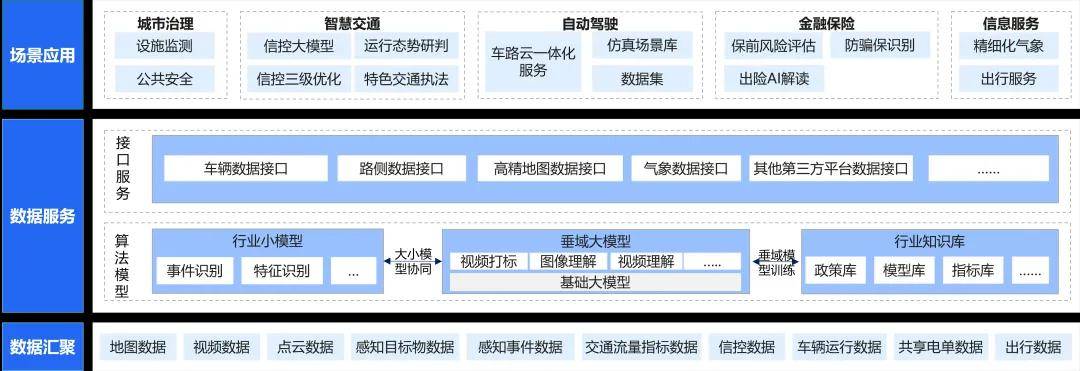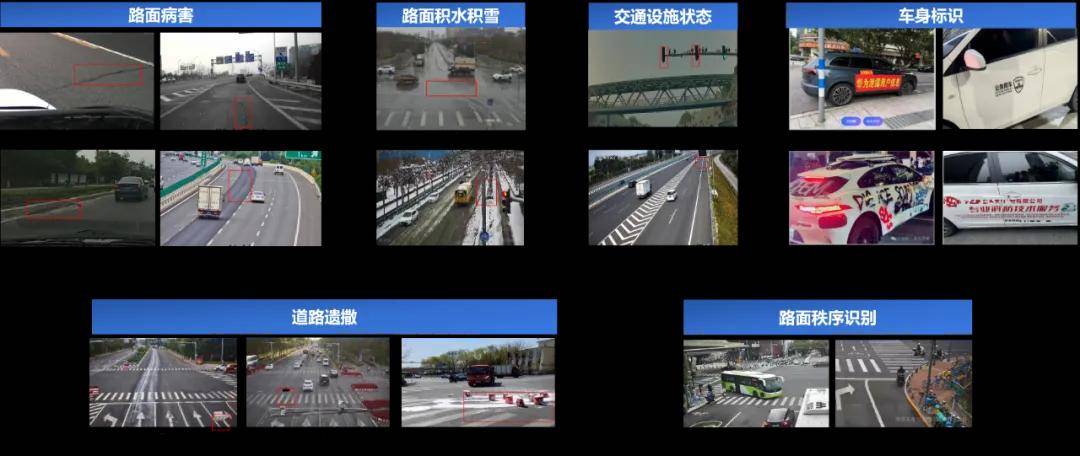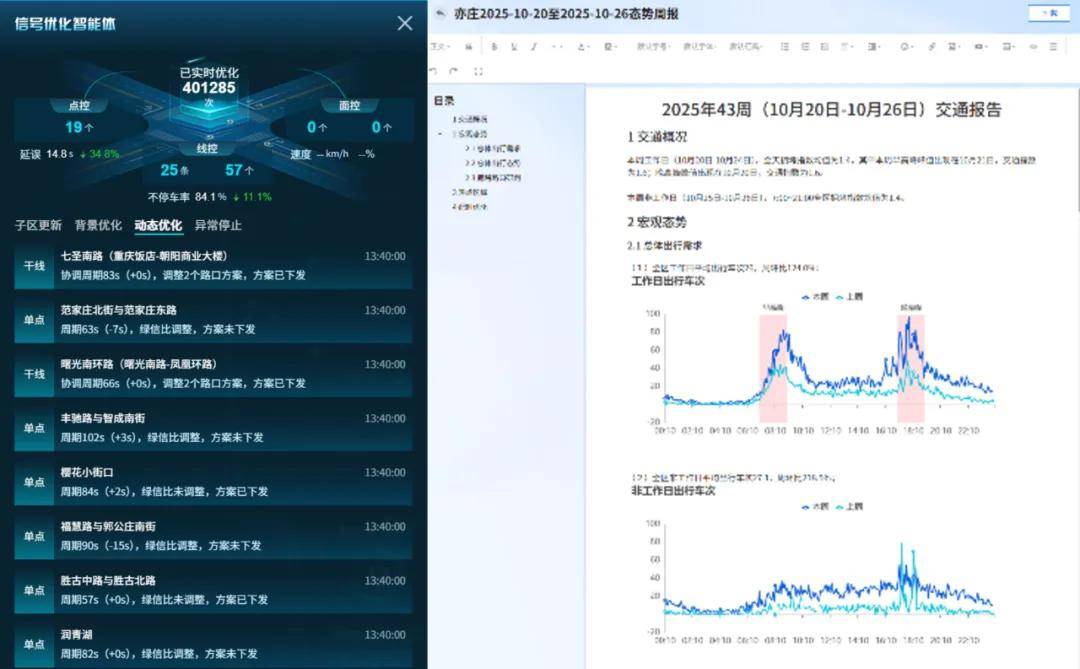Integrating Vehicle-Road-Cloud Systems Fuels 'Smart City and Intelligent Transportation' Initiatives: Innovative Approaches and Scenario Breakthroughs in Beijing’s Pioneering Efforts
![]() 11/28 2025
11/28 2025
![]() 371
371
In the dawn of the intelligent era, urban governance and travel services are undergoing profound systemic transformations.
As the operational platform provider for China’s pioneering high-level autonomous driving demonstration zone that seamlessly integrates vehicle-road-cloud systems, Beijing Road Network leverages the advanced sensing capabilities of intelligent roadside terminals and the immense computational power of the cloud. This enables the aggregation of high-quality, real-time visual and textual data pertinent to smart city infrastructure and intelligent connected vehicles (hereinafter referred to as 'Smart City and Intelligent Transportation'). A developmental closed loop has thus been initiated in Beijing: 'intelligent infrastructure deployment - multi-source data fusion - scenario applications for Smart City and Intelligent Transportation'.
Recently, Beijing Road Network successfully organized an exploratory forum on 'Vehicle-Road-Cloud Integration for Smart City and Intelligent Transportation Applications.' The event drew participation from representatives of operational platforms from prominent domestic demonstration zones and enterprises spanning the entire industrial chain. The forum delved into the shared challenges in practical pathways related to 'from construction to application,' 'from data to scenarios,' and 'from investment to revenue' in vehicle-road-cloud integration. It shared Beijing Road Network’s avant-garde explorations and latest practices in 'Smart City and Intelligent Transportation' coordination, offering replicable and scalable technical service capabilities to unlock the scale effects of vehicle-road-cloud integration.
01 Unveiling Trillion-Dollar Development Opportunities in 'Smart City and Intelligent Transportation' Cities
At present, vehicle-road-cloud integration has transitioned into a phase of large-scale application and commercial exploration, poised to be a pivotal driver for industrial integration and the development of new quality productive forces during the 15th Five-Year Plan period. However, the crux lies in discerning and fulfilling genuine data needs, fostering a virtuous cycle among intelligent infrastructure, refined urban management, and enhanced travel services—a bottleneck for many cities investing in vehicle-road-cloud integration.
According to a product development executive at Beijing Road Network, from a technical perspective, large models alone cannot enable single-vehicle intelligence to surpass human 'veteran drivers,' underscoring the necessity of vehicle-road-cloud integration. In terms of costs, the related infrastructure not only supports intelligent connected innovation but also finds broad applications in urban governance and transportation transformation. It capitalizes on existing infrastructure depreciation and renovation budgets while identifying extensive commercialization scenarios, achieving a balanced long-term return on investment.
In contrast to traditional fragmented, closed, and isolated urban construction and management, Beijing Road Network’s 'Smart City and Intelligent Transportation' solution, built on vehicle-road-cloud integration, achieves unified aggregation and interconnection of vast multi-source data. This significantly enhances data openness and utilization efficiency for relevant management departments. Leveraging large model technologies, it has initially developed five major categories of scenario applications—urban governance, intelligent transportation, intelligent connectivity, financial insurance, and information services—substantially refining the granularity and flexibility of management and services in niche fields (specific sectors).

02 Pioneering 'Smart City and Intelligent Transportation' Scenarios Foster Resilient and Livable Cities
To ensure the stable acquisition of high-quality data related to roadside status, configurations, and operations uploaded by roadside units, and to enable management and analysis of roadside service capabilities through inspection systems, the standard delineates the overall architecture, functional requirements, and performance requirements for roadside intelligent infrastructure operation and maintenance management systems. It also stipulates data requirements for intelligent infrastructure, effectively supporting efficient information exchange between roadside infrastructure (e.g., cameras, radars, communication units, edge computing) and operation and maintenance management systems via the internet. This facilitates predictive maintenance of equipment failures, significantly enhancing roadside intelligent infrastructure management and operation.
'During the demonstration zone’s construction, Beijing Road Network continuously received and researched data needs from numerous management departments, industrial chain enterprises, and research institutions, owing to its unique data resources,' remarked a data product executive at Beijing Road Network. 'However, the crux of exploring business models lies in identifying the urgency of data needs for single scenarios and the commonalities across multiple scenarios during practical implementation.'
Hence, focusing on the urgent need to enhance urban disaster warning and emergency response capabilities, as well as the widespread demand for improved traffic travel experiences, Beijing Road Network has iteratively expanded its 'Smart City and Intelligent Transportation' coordination capabilities. This builds upon innovative applications such as intelligent connected vehicle safety monitoring, intelligent signal control optimization, and vehicle-road-cloud integration functionality.
(I) Precise Perception of Road Risks: Constructing an Intelligent Guard Network for the 'Urban Lifeline'
For routine maintenance of urban road infrastructure, minor issues like cracks and debris often go undetected due to limited manpower, rapidly escalating into exponential maintenance cost increases or even larger disruptions like traffic interruptions. More critically, existing management platforms struggle to promptly warn and respond to sudden public safety incidents such as illegal banners, crowd gatherings, or abnormal vehicle acceleration, endangering social safety and stability.

Based on real-time aggregation of roadside video and dynamic sensing from inspection vehicles, Beijing Road Network accurately identifies and detects dozens of event types, including road surface defects, traffic facilities, and road conditions. Utilizing large model technologies, it has developed capabilities to recognize anomalies related to road maintenance and public safety, significantly reducing road maintenance costs and supporting safe urban operations. To date, Beijing Road Network has assisted Beijing Yizhuang in deploying video algorithms at 395 key locations for intelligent inspection of events such as road excavations, debris, fallen trees, and traffic accidents. It has cumulatively warned of over 5,000 instances of minor road surface water accumulation and provided real-time safety monitoring for large-scale events like robotics conferences, city marathons, and GT races.
(II) Developing Six Intelligent Agents: Empowering the Expansion and Upgrade of Intelligent Signal Control
Traffic signal control acts as a 'regulating valve' for road efficiency, with outdated and rigid control being a major bottleneck for traffic congestion. Previously, Beijing Road Network optimized signal control across Yizhuang’s core area using multi-source, high-quality data from roadside units, vehicles, and the internet, improving road efficiency by over 15%.
Building on this, Beijing Road Network promptly introduced large model technologies to innovate an AI signal control assistant with six functions, including problem diagnosis, automatic optimization, and intelligent consulting. It has achieved automatic diagnosis and analysis of issues like intersection imbalances and excessive queuing, with a problem diagnosis accuracy rate of 91.11%.

Meanwhile, the company leveraged internet data as a foundation, integrating multi-source heterogeneous data to implement a full-process closed loop in Beijing’s Tongzhou, Fengtai, and Chaoyang districts: 'traffic problem diagnosis - two-tier signal control optimization - traffic operation status evaluation.' For example, in Tongzhou’s sub-center, post-optimization average speeds on arterial roads increased by 10.74% during weekdays, while average delays per vehicle decreased by 27.66%.
(III) Proactive Exploration of Meteorological Services and Financial Insurance: Enhancing Travel Safety and Satisfaction
Beyond addressing urgent and essential issues, Beijing Road Network has promptly recognized the complex changes in urban climates and the need to upgrade intelligent connected vehicle services, exploring data applications in meteorological services and financial insurance.
Focusing on creating a more business-friendly and livable urban environment, Beijing Road Network enhances climate risk warning and management capabilities for relevant departments while improving public travel safety and experiences. By fusing vehicle-road coordination intelligent sensing data with surrounding meteorological station data, it generates real-time meteorological monitoring information with high spatiotemporal resolution (meter-level rain, snow, fog, and corresponding road conditions) and high-precision knowledge graphs of meteorological disaster risk distributions. 'Compared to traditional meteorological information services, our product significantly enhances information timeliness, fidelity, and sharing,' stated a data product executive at Beijing Road Network.

In the realm of intelligent connected vehicle services, as vehicle connectivity penetration gradually increases, insurance companies struggle to access real-time operational data from automakers, limiting the objectivity and scientific rigor of risk assessment and claims processing. In insurance underwriting and pricing, Beijing Road Network utilizes vehicle trajectory data to collaborate with insurers in building vehicle feature tagging systems and precise risk rating models, enabling quantification and stratification of vehicle risks. For accident analysis, it employs AI algorithms with on-site accident video data to explore rapid extraction of key claims information for scenarios like accident reconstruction and liability determination, assisting insurers in streamlining inspection processes and shortening claims processing times. Additionally, it applies anomaly detection algorithms to proactively warn of false claims and identify fraudulent insurance behaviors, strengthening risk control defenses and reducing claim losses for the insurance industry.
Recently, a series of significant policy documents, including the 'Action Plan for Implementing the Opinions of the General Office of the CPC Central Committee and the General Office of the State Council on Advancing the Construction of New-Type Urban Infrastructure to Build Resilient Cities (2025-2027)' and the 'Action Plan for Deepening Smart City Development and Promoting Comprehensive Digital Transformation Across All Domains,' have been introduced. These policies further clarify the direction and priorities for the coordinated development of 'Smart City and Intelligent Transportation' under vehicle-road-cloud integration. Beijing’s practice, grounded in 'Smart City and Intelligent Transportation' technological capabilities, will undoubtedly provide more paradigmatic references and empirical insights for refined urban governance and safe, efficient travel services in future cities.






